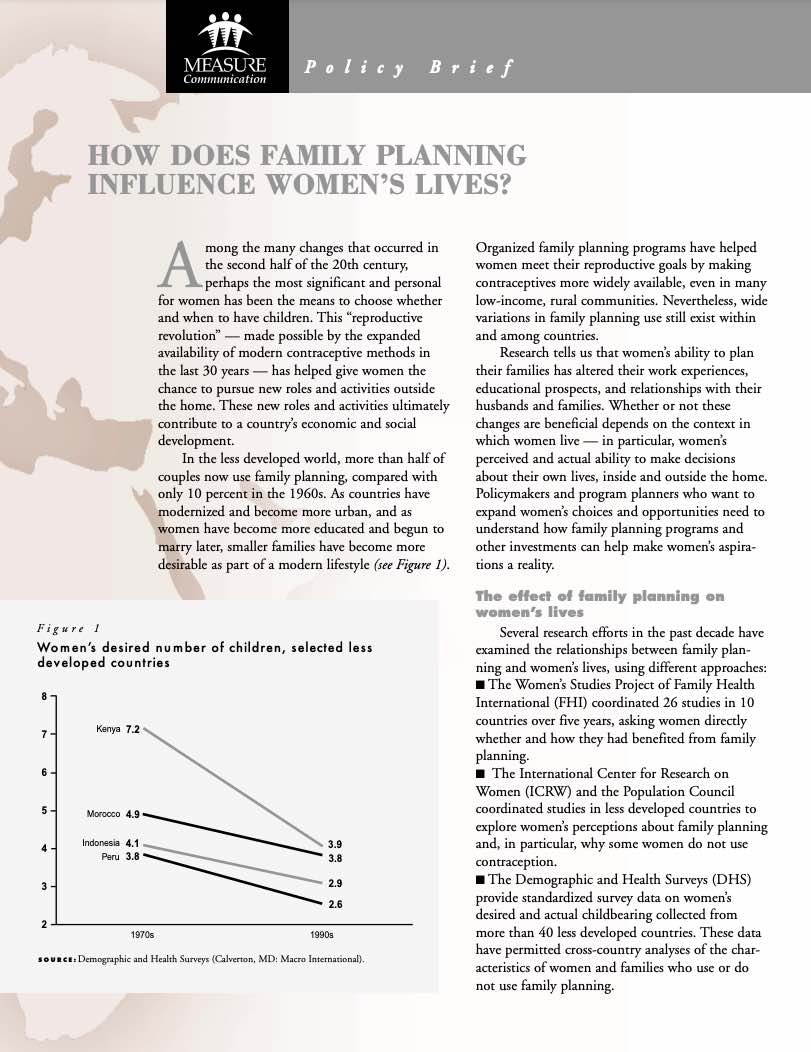
How Does Family Planning Influence Women's Lives?
Product: Report
Author: PRB
Date: October 3, 2003
(October 2000) Among the many changes that occurred in the second half of the 20th century, perhaps the most significant and personal for women has been the means to choose whether and when to have children. This “reproductive revolution”—made possible by the expanded availability of modern contraceptive methods in the last 30 years—has helped give women the chance to pursue new roles and activities outside the home. These new roles and activities ultimately contribute to a country’ economic and social development.
In the less developed world, more than half of couples now use family planning, compared with only 10 percent in the 1960s. As countries have modernized and become more urban, and as women have become more educated and begun to marry later, smaller families have become more desirable as part of a modern lifestyle. Organized family planning programs have helped women meet their reproductive goals by making contraceptives more widely available, even in many low-income, rural communities. Nevertheless, wide variations in family planning use still exist within and among countries.
Research tells us that women’s ability to plan their families has altered their work experiences, educational prospects, and relationships with their husbands and families. Whether or not these changes are beneficial depends on the context in which women live—in particular, women’s perceived and actual ability to make decisions about their own lives, inside and outside the home. Policymakers and program planners who want to expand women’s choices and opportunities need to understand how family planning programs and other investments can help make women’s aspirations a reality.

 ">
">